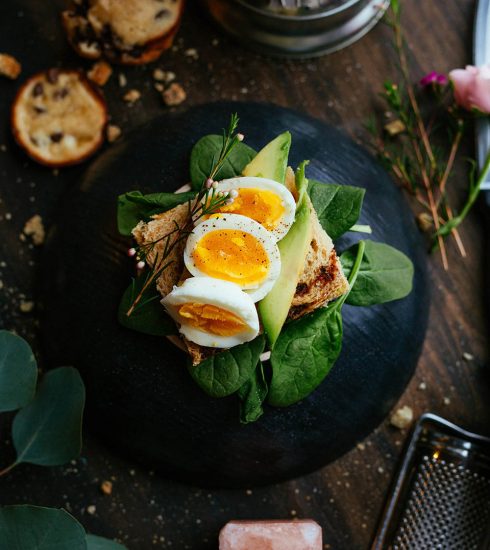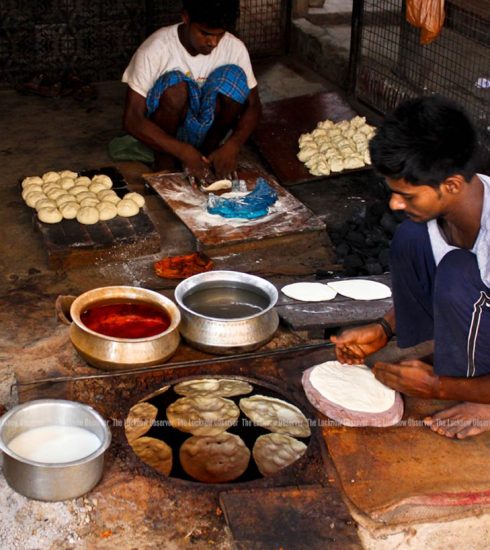Malai Makhan
Irresistible to its creamy core
Food is an integral part of the city’s tehzeeb sprinkled with that generous dash of nazaakat and nafaasat. The ultra sophisticated Nawabs devised various methods to invent meals that were easy to eat and chew, so that the person could relish the taste and not struggle to bite into a meal!
Makhan Malai is indeed a heavenly dessert that melts and vanishes as soon as it enters the mouth. According to oral traditions, however, it didn’t originate in Lucknow but Mathura. Without bothering about its history of origin, the Lucknow- wala, young and old; rich and poor alike love savouring the frothy dessert that is available as soon as the summer sun mellows down in its intensity in the more autumn months of October and November. Makhan Malai is a seasonal dessert that is prepared in cooler times of the year only.
Makhan Malai-wallahs make trips on their bicycles, with two steel buckets hanging on either side of the handle and covered with the traditional red cloth. They are also spotted sitting beside their cart near Gol Darwaza, Chowk, scooping up one tempting Makhan-Malai dish after another. The inviting presentation of the dessert adds to the sudden flux of drool in the mouth at the very first sight.
The dishes are covered by a big conical glass funnel that is partially draped with the same traditional red cloth around it. The creamy effervescence becomes even more tantalizing when saffron is added to it, thus giving it a soothing, pale yellow colour. Makhan Malai is garnished with fresh flakes of soaked pistachios and almonds. Lastly, it is beautifully embellished by ‘Chandi ka Warq’ (silver leaf) that makes it look even more irresistible.

Makhan Malai and Nimish, have become synonymous but few know that there is a minor difference between the two. While the former originated in India using cow’s milk, the latter is an Afghani dessert in which horse’s milk was used. But the method is almost the same as in both Makhan Malai and Nimish, the mixture of milk, cream and sugar is hung in a clay pot all night under the winter sky. The peculiar freshness and lightness comes from a dollop of dew, the secret ingredient added to it by Mother Nature. Early every morning, the clay pot is taken off the peg and the mixture is blended using a mathaani (manual wooden blender), to make it frothy.
The most famous shop selling Nimish called Samad was located in Nakhas near Akbari Gate but has been shut since a few years.
In modern times, Makhan Malai wallahs have witnessed a decrease in the popularity of this traditional delicacy.
“I used to prepare 10kg to 15kg of Makhan Malai earlier but now the quantity is reduced to 7kg,” rues Ramesh Kumar Kashyap, a pheriwala who ventures out at 7 am in the winter mornings from his home in Balaganj, riding through Thankurganj, Hussainabad, Chowk, City Station, Qaiserbagh and Lalbagh, calling it a day around 3 pm.
Kashyap, and others like him want their children to explore other options of livelihood, preferably a ‘decent’ job in “a company or office.” This is due to the intensive labour, higher costs and low returns involved in selling Makhan Malai, says Kashyap.
Makhan Malai is one unique Lucknawi dessert that brings out a child in all of us. Get a taste of it to be lost in a trance from where it’s not easy to come out. Just like overtones that linger in the air long after the guitar chords have stopped to be plucked, similarly the flavour of Makhan Malai continues to intoxicate taste buds much after it melts in the mouth!
Makhan Moments
It is believed that Lord Krishna when he was a baby had loved butter churned in his foster home in Mathura by Yashoda, his mother. When he was not allowed to eat more he used to steal it from clay pots hung high in straw holders hooked to the ceiling to earn the name of maakhan chor or butter thief coined for him by the entire village.








